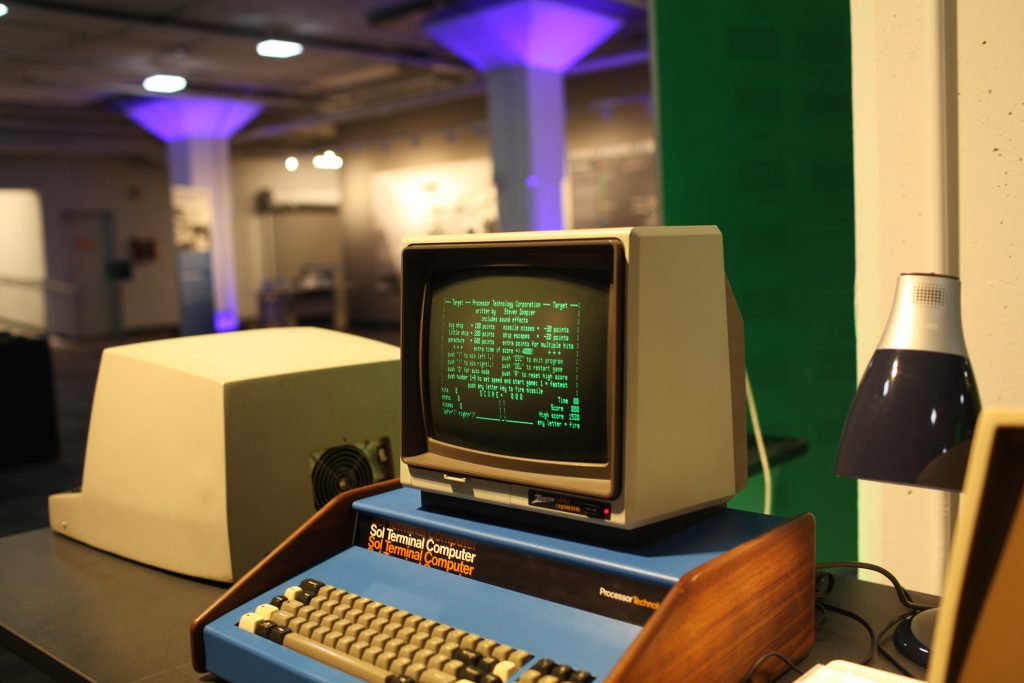A while back I had an interesting conversation with my older son, who is in 7th grade. He was telling me about various new rules his school had introduced — like only two bathroom breaks per week per class — which, we agreed, did not make much sense. But then he added: It seems like the teachers also know that the rules don’t make sense. If you talk to them about it, it’s pretty clear that this is something that they’ve just been told they have to say. Then we all forget about it and they go back to teaching. It’s not like anyone is checking if they actually enforce it.
I’ve thought about this conversation now and then in recent months. It seems to encapsulate, in a small way, the professional autonomy that has somehow become one of the central political battlegrounds of our time.
Teaching is very hard to manage from the top down. As a teacher myself, I’ve often experienced this. There are all kinds of rules and standards that are announced from the top. But very little of what you do in the classroom can be effectively monitored. In reality, you teach your classes according to your own standards, and follow the rules that make sense to you.
This, I think, is why teaching is the quintessential public service. Which is something different from a public good.
Education is not well suited for market provision, for reasons that are probably obvious to most people reading this. It doesn’t produce a distinct commodity, that can be owned and exchanged. The product, such as it is, is almost impossible for the “consumer” to meaningfully evaluate. How do you know what you need to learn, before you’ve learned it? And of course there are externalities, economists’ favorite argument for public provision. The benefits from an educated population are broadly shared.
But the problem is not just that the product of education does not look like a commodity. The process is also a problem. Even if we think of teaching as just another form of production, it’s very difficult to rationalize it in the way that other kinds of work can be. You can’t standardize the inputs and conditions of production, which is the key to successful automation. Teachers have to make all kinds of decisions, on the spot, in unpredictable conditions. (Does this kid really have to go to the bathroom?) And there’s no straightforward way to say which decision is the right one. You have to rely on teachers to exercise their own judgement, and evaluating outcomes on the merits. Which means, fundamentally, relying on intrinsic motivation rather than external direction or uniform rules.
I’ve been teaching college for a dozen years now. Anyone who’s done this work knows how rewarding it can be when it goes well, and how agonizing it can be when it goes badly, and how hard you will work to do better. But none of these outcomes can be measured or enforced by a boss. Assessments are a joke, we all know that. The nature of the work is that the best you can do is make sure that teachers are motivated and have the resources they need — and, yes, get rid of the really bad ones — and then get out of their way.
This is not only true of teaching, though teaching is certainly among the largest and most visible forms of work that depend so strongly on the autonomy and intrinsic motivation of the worker. This characteristic, it seems to me, is a central, though seldom articulated, reason for public provision of all kinds.
I am, professionally, an economist. We economists, and economist-influenced policy people, are used to talking about public goods. We have a clear language for that. We are less used to talking about public provision.
It’s one thing to argue that government should ensure that everyone has access to education, or health care, or childcare. It’s a different, distinct argument to say that these things should be performed directly by public employees. This second argument hinges on the need for autonomous, intrinsically motivated decisions by the people doing the work. Intrinsic motivation is the opposite of incentives, indeed it requires insulation from them. It requires a space where the person doing the job can freely make decisions based on their own professional judgement — the space that things like civil service protections are precisely intended to preserve.
These questions are not limited to the public sector. They are the most politically salient there, at the moment, since the Trump-Musk regime is practically defined by attacks on the civil service. But the autonomy of workers within the production process exists in all kinds of settings, public and private; complete deskilling and perfect supervision are never possible. And this defines an axis of conflict, or a dimension of socialization, which is largely orthogonal to the question of public versus private ownership.
Even for-profit corporations depend on intrinsic motivation – people’ desire to do their jobs – and the recognition of the manager’s authority as legitimate. This is true wherever ongoing coordinated activity is required.
As a productive community and a polis, the corporation depends on what David Graeber calls “baseline communism”: the principle that when one member of a community needs or requests something within a normal range, another member will provide it without the need for any explicit reward or punishment. Within a workplace – even a rigidly profit-oriented one – tasks often must be performed by whoever is in a position to, and tools provided to whoever needs them. When one office worker asks another to use their stapler, the answer will not be “what’s in it for me?”. The guiding principle here is, from each according to their abilities, to each according to their needs.
A distinct but related category of intrinsic motivation is what the French historian Jules Michelet called “the professional conscience” – the disinterested desire to do one’s job well. Studies of people’s experience of the workplace reveal plenty of alienation and insubordination, but also a great deal of effort to carry out the work – whatever it may be – as well as possible, by its own standards.
Some degree of worker autonomy is always necessary for the routine functioning of production. But how much autonomy is always a site of conflict, often latent, occasionally acute.
This is a point emphasized by observant historians of socialism. George Eley, in his monumental history of the left in Europe Forging Democracy, emphasizes that in the great revolutionary upsurge that immediately followed the First World War, socialization meant something quite different from public ownership. The central goal of the movements that came to be known as “council communism,” in Germany and Italy in particular, was establishing workers’ control over the production process, regardless of formal ownership. Socialization in this context meant a change in the internal organization of the workplace, rather than a change in who exercised authority at the top. In Eley’s words:
The distinctiveness of revolutionary activity in 1917–23 lay in the workers’ councils… These ranged from unofficial strike committees developing larger political aims, like the shop stewards’ movements of Clydeside, Sheffield, or Berlin, to sophisticated revolutionary innovation, like the factory councils in Turin. In between came a rich assortment: the Ra ̈te in Germany and Austria, claiming functions of class representation in a locality; councils based in factories, firms, or other economic units; and local action committees for specific ends…
A new medium of working-class activity, councils differed from both socialist parties, which acted through parliamentary and state institutions, and unions, which worked on the capitalist economy’s given assumptions via the wage relation. … Stronger versions of the council idea were hostile to orthodox trade unionism and socialist electoralism, recoiling from the accepted model of separately organized, centralized, nationally focused political and economic movements. Instead, councils were based within production: inside the unit of production itself, in the factory, the plant, or the shop. Councils raised issues of industrial democracy, workers’ self-management, and workers’ control.
Unlike unions, councils were not imagined as vehicles for collective negotiation with the boss over workers’ specific interests as workers — pay, working conditions, and so on. Rather, they were imagined as vehicles for replacing the boss and organizing the production process itself.
Council communism was a product of the breakdown of established hierarchies that followed the war; as a distinct movement, it was short-lived. But the axis of conflict it crystallized — over control of the production process, as opposed to workers’ interests as sellers of labor power — is very much still with us. And as teachers know as well as anyone, workplace autonomy needs to be defended from the state as well as from private employers.
*
One wouldn’t want to say there is no relationship between the two sense of socialization. The pursuit of profit creates powerful pressures for the erosion of workers’ control. While public ownership is not the same as workers’ control over production, it can be a shield for it where it already exists. As a CUNY professor, I am well aware of the benefits of an insulating layer of bureaucracy. Those of us in the classroom work very hard to produce learning in our students. People at the top of the institution have all kinds of ideas about how to change things, generally for the worse; but they usually bog down in thick layers of bureaucratic inertia before they can do much harm.
The social position of teachers and other professional employees has taken on new urgency since the election. One reason for this is that they are in the crosshairs of the right. But another reason is that the left is not sure how it feels about them, either.
A frequent topic in election post-mortems is the disproportionate share of votes the Democrats now get from the college-educated. In a typical exit poll, the split was almost exactly symmetrical: 56-42 for Harris among those with college degrees, 56-43 for Trump among those without. It’s a commonplace in these discussions, perhaps especially on the left, to contrast college-educated with working-class, as mutually exclusive categories.
Here for example is a Jacobin piece that treats the two categorizations as straightforwardly equivalent: “Donald Trump made substantial inroads among the working class in November. The best data currently available from AP VoteCast indicates that the Democrats’ share of non-college-educated voters fell from an already low 47% in 2020 to 43% in 2024. …. Democrats lost among working-class (noncollege) voters.”
As a factual matter, it is clearly true that Democratic voters in the US are increasingly found among those with higher education. Nor is this a phenomenon unique to the US. Thomas Piketty highlights it as a general phenomenon in his widely-quoted formulation of the “Brahmin left.”
But who exactly are the college-educated?
One way to answer this is to look at the US occupations with the greatest difference in employment as a share of those with college degrees, and those without. Count up those with degrees, subtract those without them, and you have your Brahmin occupations. If you do this exercise, number one on the list turns out to be nurses; number two is elementary school teachers, with secondary and college teachers a bit further down. If you add preschool teachers (0.5%), special-education (0.7%) and “other” teachers (0.7%) to the elementary and secondary teachers, about 10% of all American workers with college degrees are classroom instructors of some kind.
As a first approximation, then, when you talk about “college-educated voters,” who you are talking about is nurses and teachers. And if, like the person in Jacobin, you write “working-class (noncollege) voters,” what you are saying is that teachers (and nurses) are not members of the working class. Which presumably means that they are not workers.
Well, are teachers workers? My impression is that there is some uncertainty about this. And if not workers, then what?
The obvious answer is: Teachers are members of the professional-managerial class (PMC). Indeed, when Barbara and John Ehrenreich coined this term back in the 1970s, they offered teachers as the paradigm case.
It’s interesting reading the Ehrenreichs’ essay today. Its starting point is the fact that “in the United States in the last two decades, the left has been concentrated most heavily among people who feel themselves to be ‘middle class’.” At that time, “the last two decades” would begin in the 1950s. The Brahmin left is evidently not a new development.
For the Ehrenreichs, PMC members like teachers are distinct from the working class because their work is about reproducing the existing social relations, rather than producing particular commodities. If we want to place someone in one or the other of these categories, we should ask: “Is their function required by the process of material production as such, or by capital’s concern for ruling and controlling the productive process?” On the face of it, this seems clear enough. But with a little more thought, we might wonder is this a distinction between teachers and nurses as opposed to real workers? Or does it rather reflect a dimension of all work under capitalism?
Not all off our useful and necessary activity can be embodied in discrete physical objects with clear property rights attached to them. And the maintenance of capitalist relations of domination and control are, it seems to me, fundamental to all kinds of work, not just that of a specialized group. We also might want to consider the distinction — elided in the Ehrenreich essay — between reproducing capitalist social relations specifically, and social reproduction in general. Surely the specialists in the former must include the police, and guard labor generally — but cops are seldom if ever who people have in mind when they talk about the PMC.
Consider the opposite end of the scale of occupations above — those that account for a disproportionately large share of those who don’t have college degrees, relative to those who do. Number one by this criterion is truck drivers, accounting for 3.6 percent of workers without a college degree and just half a percent of those without. Just behind them are cashiers, at 3.5 and 0.5.
Driving seems straightforwardly to be material production: a commodity located here is different from a commodity located there. But what about cashiers? They come into the story only once the process of material production is done with; as far as that is concerned, the users of commodities could simply claim them directly, if necessary leaving some record themselves. (You can still occasionally find this arrangement in small New England country stores.)
The cashier is needed not for production, but to ensure that the use-value is exchanged for an equivalent quantity of money. Surely, by the Ehrenreichs’ criteria, this is a perfect example of work that exists to maintain capitalist social relations, rather than anything to do with the needs of material production? But nobody, when they talk about the PMC, is thinking of cashiers.
The Ehrenreichs, in the 1974 essay, do offer a second criteria for membership in the PMC: a class, they write, is also defined by :a coherent social and cultural existence: members of a class share a common life style, educational background, kinship networks, consumption patterns, work habits, beliefs.” The problem, which they acknowledge but don’t really engage with, is that classes defined in this way don’t coincide with those defined by one’s role in production. It may perhaps be true (or perhaps not) that the spouses and parents of teachers are likely to be professionals rather than blue-collar workers; it may be true (though one shouldn’t take it for granted) that teachers have more in common culturally with property owners than with people who use their hands for a living.
My own experience teaching CUNY students suggests, for what it’s worth, that the Ehrenreichs were wrong on this point. My students, almost all non-white immigrants whose day jobs are as busboys and doormen and home health aides and taxi drivers, are immersed in the exact same culture as my own kids are. Culturally there is no difference my students and middle-class kids; the only difference is my students’ lack of economic security. To transpose the well-known quote: the poor are no different from you or me, except they have less money.
That is not how it looked to the Ehrenreichs. For them, the conflict between PMC and workers is the same kind of fundamental opposition as between workers and capitalists. “The relationship between the working class and the PMC, they write, “is objectively antagonistic.” To Marx and Engels’ classic list of historic oppositions — “freeman and slave, patrician and plebeian, lord and serf” the Ehrenreichs add “teacher and student, … social worker and client.”
As a teacher, I must admit that I am not sure that my relationship with my students is useful compared with that of a feudal lord to his serfs. (But then I wouldn’t think so, would I?) Again, one might note that the Ehrenrecichs — like later users of the PMC concept — don’t distinguish between the reproduction of specifically capitalist relations, and social reproduction in general. As a parent, am I producing labor power for the capitalist class? Well, yes. But I don’t think that is all I am doing.
Be that as it may, there do seem to be people who do seem to see professionals like teachers as the class enemy. Hostility to the PMC is particularly central to the left-right hybrid politics expressed in places like Compact, or American Affairs or in different forms by Vivek Chibber on the left and J. D. Vance on the right — what people sometimes call diagonalism.
We might also call it Wagenknechtianism, after its most distinctive practitioner in European politics. Sahra Wagenknecht herself justifies her eponymous party on the ground that she is the tribune of “the little people, those in small towns and villages, without university degrees, … the world beyond professional political life,” as against the “new, university-educated, professional class.”
One can’t disagree that there is a problem when political officials and activists become a small, self-contained group, when politics becomes simply a profession. (Though it’s a bit funny coming from someone like Wagenknecht, who has done nothing else in her life.) But this, it seems to me, is a different issue from the share of voters drawn from the college-educated. A professional politician is one thing; an elementary school teacher is something else.
Certainly teachers occupy an ambiguous role in contemporary capitalism. The PMC is one way of theorizing that. But one could also think of teachers as somewhat analogous to factory workers in semi-industrialized countries. Their strategic position does, objectively, make them relatively privileged compared with the majority of the population. But it also gives them a basis of social power. Both factory workers and teachers provide a useful service for the bosses. (That’s what the money is for.) But their distinctive work experiences can also build solidarity, embody anti-capitalist values, and prefigures alternative mode of social organization. This is, perhaps, as true of the work of teaching as it is of work in factories.
Somewhere in his prison writings, Antonio Gramsci describes a conversation with some Sardinian soldiers who were brought to Turin to help put down the great strikes of 1921. “What have you come to Turin for, he asked them. “We’ve come to shoot at some gentlemen who are going on strike.”
“But it’s not the gentleman who’re going on strike, it’s the workers, they’re poor people.”
“Here they’re all gentlemen: they wear collars and ties and earn 30 lire a day.”
Present-day professionals wear collars and ties; we make the contemporary equivalent of 30 lire a day. It’s hard not to be reminded of Jay Gould’s perhaps apocryphal claim that “I can hire one half of the working class to kill the other half.” In this context, Wagenknechtian talk about the professional class sounds like a job application.
*
People who talk about the PMC tend to be somewhere in the Marxist tradition. If we look to Marx as a political strategist rather than a class taxonomist, then his great insight was the need to link a positive program to some objective force able to advance it. Politics, from this point of view, is about giving conscious, organized form to the conflicts that already exist. Applying this insight today means recognizing that the lines of conflict are different than they were in Marx’s day.
Professional conscience is an important source of power for left. Our side cannot organize on basis of money. Money as an organizing principle works for a program of advancing or stabilizing the power of the bosses; it doesn’t work for a program of challenging that power. The power and prestige of technical expertise are, in principle, more amenable to a program of social transformation. The desire to do one’s job well is something that capitalism cannot do without. And that creates an alternative basis of solidarity and social power — the possibility of what Veblen long ago imagined as a “Soviet of engineers”, mobilized against the “sabotage” of production by the owning class.
A soviet of engineers may not sound very plausible at this moment, to you or me. But it’s worth recalling that to the lords of Silicon Valley, it seems very plausible. In a conversation with tech reporter Kara Swisher, Ezra Klein suggests that Musks role in the government, and the broader tech turn to the right, stems from the fact that “a lot of the C.E.O.s just hated their employees. And what radicalized them was that they had lost control of their companies, and they wanted that control back.”
You can say that CEOs had never lost control of their companies. You can say this claim, or Marc Andreessen’s even wilder claim that many tech companies “were hours away from full-blown violent riots … by their own employees” sounds paranoid and hysterical.
On one level, they are. But they also express something real. Professional employees — teachers, engineers, coders — necessarily have a degree of autonomy on the job, a space within which they decide what needs to be done. To that extent, the owners, when they need to make use of such employees, do indeed lose control of their companies. Professional norms, standards, credentials, skills — these are real sources of power for those of us who do the work, as against those who claim the results of it.
Historically it has always been relatively privileged workers who lead the opposition to the bosses. That’s who’s in a position to do it.
It is true that, today, voters for traditional parties of the left are disproportionately likely to be college-educated. But this is also increasingly true of union members. In the United States today, 47% of union members have college degrees, as opposed to 41% of the population as a whole. In the US today, there are one million union members in manufacturing. There are three million in education. You can say that’s a problem. You can also say, it’s a base we can build on.
Elon Musk and his peers hate their workers. They hate what they see as their unjustified power over production; unjustified, from their point of view, because it is not based on ownership. Whether it is based on skills or credentials or regulations or union membership doesn’t matter to them; in some contexts, arguably, it shouldn’t matter so much to us.
The overlap between professional workers like teachers and union members isn’t just an abstraction; in the past decade, a disproportionate number of strikes have been carried out by teachers. These strikes have been, like most strikes, demands for better pay and benefits. But they have also, to some large degree, been for what we, might call PMC-specific demands — the right to do one’s job properly, according to its own objective standards. Teachers want to be able to teach.
I think there is the possibility of a broader program here. I think the specific interests and experiences of professional-class workers can be generalized. I think there is a way that they, just like the interests and experiences of industrial workers, can represent society as a whole.
Autonomy in production may be a defining characteristic of the profession class, but it’s something that exists in all kinds of work to different degrees. Anybody who has a job that involves producing some concrete use value can weigh the standards implicit in that use-value, against whatever the bosses say.
The other day, for instance, a garbageman showed up at our house, a Brooklyn sanitation worker straight out of central casting. We’d put out an old mattress and bedspring. Apparently we had not followed the relevant disposal rules.
“It’s supposed to be completely covered in plastic,” the sanitation guy said. “The whole thing, like with Saran Wrap.”
Really?” I asked.
“Really,” he said. And then: “Ah, yeah, it’s a stupid rule. I’ll take it the way it is.”
The six year old was delighted to watch as the mattress and bedspring disappeared into the truck’s hydraulic press. Crunch, crrrrrunch, CRUNCH!

























